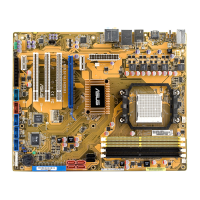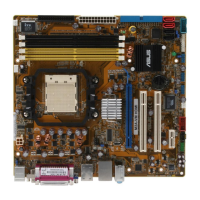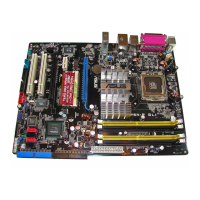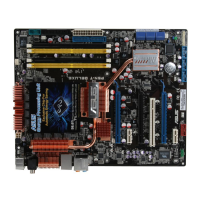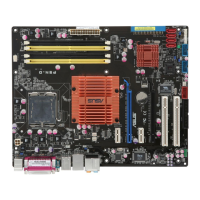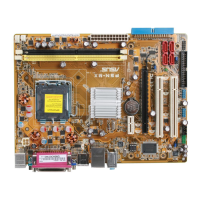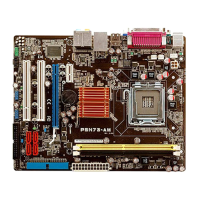Do you have a question about the Asus P5N-EM HDMI and is the answer not in the manual?
Legal disclaimers regarding FCC, Canadian regulations, and product compliance.
Essential electrical and operational safety precautions for handling and installing the motherboard.
Explains the manual's structure, how to find information, and symbols used.
Details the CPU socket, chipset, and supported DDR2 memory types and configurations.
Lists expansion slots, audio, LAN, USB ports, and key ASUS special features.
Describes the function and location of all rear panel connectors and ports.
Details all internal connectors for drives, fans, power, and front panel headers.
Covers VGA output, BIOS features, power requirements, and system manageability.
Lists contents of the support CD and the motherboard's physical form factor.
Welcomes the user and introduces the motherboard.
Lists all items included in the motherboard package for user verification.
Highlights key technologies and features supported by the motherboard.
Lists important precautions and safety measures before installation.
Provides a visual layout and basic description of the motherboard components.
Details CPU socket compatibility, installation, and heatsink mounting procedures.
Explains DDR2 DIMM sockets, memory configurations, and installation.
Describes available expansion slots like PCI and PCI Express for add-on cards.
Details the function and configuration of various jumpers on the motherboard.
Identifies and explains the function of all rear panel ports and connectors.
Details the function and location of internal connectors for various devices.
Guides on utilities for BIOS management, saving, and updating.
Explains how to enter and navigate the BIOS setup utility interface.
Details basic system information and settings available in the Main BIOS menu.
Covers advanced system settings for CPU, chipset, and onboard devices.
Explains ACPI and APM settings for power management and system suspend.
Guides on configuring boot device priority and boot settings.
Describes special function utilities available within the BIOS setup.
Explains how to save changes, load defaults, or discard settings and exit BIOS.
Provides guidance on installing OS and optimizing hardware settings.
Details the contents of the motherboard support CD, including drivers and utilities.
Instructions for creating a bootable RAID driver disk for OS installation.
Explains the requirements and usage of Intel SpeedStep Technology for power saving.
Details the requirements and enabling process for Intel Hyper-Threading Technology.
| Form Factor | Micro ATX |
|---|---|
| Socket Type | LGA 775 |
| Maximum Memory | 8GB |
| HDMI | Yes |
| Memory Standard | DDR2 800/667/533 |
| SATA | 4 x SATA 3.0 Gb/s |
| IDE | 1 x ATA133 |
| Integrated Graphics | NVIDIA GeForce 7050 |
| Audio | 8-channel HD Audio |
| Video Ports | 1 x HDMI, 1 x DVI, 1 x VGA |


